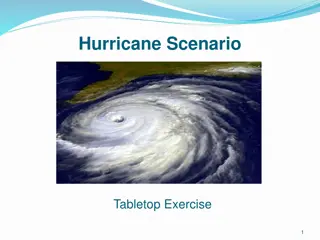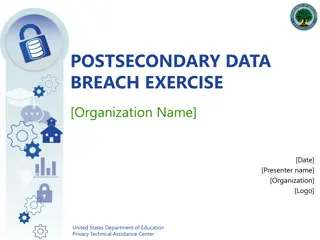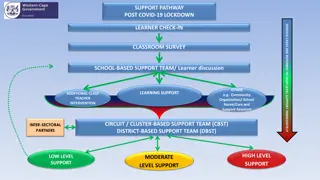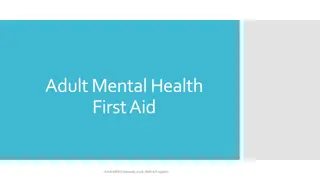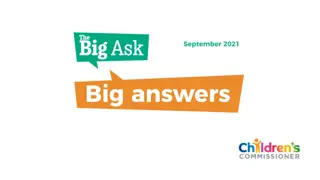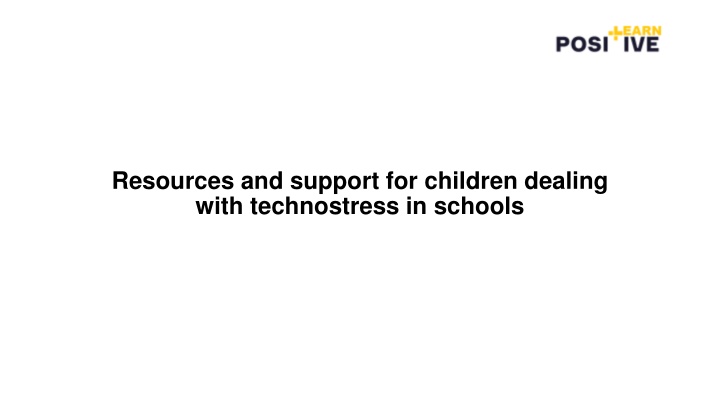
Addressing Technostress in School Settings
Explore the definition and examples of technostress, its importance in schools, effects on children and adolescents, and strategies for coping with it. Discover resources and support available for dealing with technostress among students.
Download Presentation

Please find below an Image/Link to download the presentation.
The content on the website is provided AS IS for your information and personal use only. It may not be sold, licensed, or shared on other websites without obtaining consent from the author. If you encounter any issues during the download, it is possible that the publisher has removed the file from their server.
You are allowed to download the files provided on this website for personal or commercial use, subject to the condition that they are used lawfully. All files are the property of their respective owners.
The content on the website is provided AS IS for your information and personal use only. It may not be sold, licensed, or shared on other websites without obtaining consent from the author.
E N D
Presentation Transcript
Resources and support for children dealing with technostress in schools
Index What is technostress? Importance of the topic Effects of technostress on children and adolescents Causes of technostress at school Strategies for coping with technostress Resources and support at school
What is technostress? Definition of technostress: Technostress is a form of stress caused by the use of or constant interaction with technology, especially digital devices and online platforms. It occurs when the individual feels overwhelmed by technology, whether it is due to the amount of information, constant accessibility, or the complexity and pace of technological change.
What is technostress? Examples Examples of technostress in the school environment: 1. overwhelm by online learning: Constant video conferencing, email communication, and online assignments can leave students feeling overwhelmed 2. Social pressure from social media: the pressure to be present and active on social media can cause stress, especially in the context of social dynamics at school 3. Information overload: the large amount of information available online can make it difficult for students to distinguish relevant from irrelevant information, leading to stress 4. Technical problems: difficulties with hardware or software, slow internet connections, or a lack of digital skills can be sources of stress
Importance of the topic The topic of technostress is essential for students and schools for several reasons: 1. impact on learning ability: technostress can affect pupils' ability to concentrate and memory. This can lead to difficulties in the learning process, reduced efficiency in studying and ultimately, poorer school performance 2. mental health: chronic technostress can lead to symptoms such as anxiety, depression, exhaustion, and burnout. This mental stress not only affects students' well-being but also their overall performance and social interaction 3. physiological effects: Extended screen time and the lack of physical activity associated with technostress can lead to health problems such as headaches, eye strain, sleep disorders, and postural problems 4. social interaction and communication skills: Excessive use of digital technologies can hurt the development of social skills and the ability to communicate face-to-face, which is crucial for personal growth and later employment 5. effects on behavior: Technostress can lead to decreased attention span and increased irritability. At school, this can manifest itself in a lower tolerance for challenges and frustrations 6. addiction and addictive behavior: Intensive use of digital technologies can lead to addiction, which manifests itself in a compulsive need to be constantly online and using digital devices.
Effects of technostress on children and adolescents 1. Mental health: technostress can lead to anxiety, depression, and a feeling of being overwhelmed 2. Sleep disorders: The intensive use of screen devices, especially before bedtime, can hurt sleep 3. Concentration problems: Constant distractions from digital devices can reduce attention span and the ability to concentrate 4. Social issues: Excessive screen time can lead to a neglect of face-to-face social interactions and impaired development of social skills 5. Physical health: prolonged screen time can lead to physical complaints such as eye strain, headaches, and postural problems 6. Behavior and performance: In school, technostress can manifest itself in the form of reduced engagement, lower performance, and altered behavior
Causes of technostress at school Excessive use of digital devices: Extended, often uncontrolled use of smartphones, tablets, and computers.- Leads to eye strain and visual fatigue Causes sleep disturbances and interruption of the natural sleep cycle.- Physical complaints such as neck and back pain Impairment of interpersonal relationships Reduced ability to focus on non-digital activities. Pressure from online learning and constant accessibility: Constant online presence pressure for lessons, homework, and group projects.- Stress from using digital platforms and tools Overload and stress due to lack of separation between school time and free time Can lead to burnout and mental exhaustion Effects of social media and cyberbullying: Provides a platform for social interaction and information sharing Sources of stress through social comparison and pressure to fulfill Exposure to negative comments and cyberbullying Cyberbullying leads to anxiety, depression, and self-harm Affects students' mental health and well-being.
Strategies for coping with technostress 1. time management and breaks from screen time: Introduce set times for digital device use. Take regular breaks during long periods of screen time. Consciously plan offline activities to relax and unwind. Use apps and tools to help monitor and limit screen time promoting extracurricular activities and hobbies: Encouraging non-digital media-related activities such as sports, art, music, or reading. Organizing group activities or clubs that promote interests outside of the digital space.Creating opportunities for social interaction and teamwork in a non-digital environment importance of adequate sleep and physical activity: Educating about the importance of good sleep for mental and physical health. Promote healthy sleep patterns, including pre-bedtime routines without screen devices. Integrating physical activity into everyday life, such as regular sport, yoga, or simple movement exercises. Organization of sporting events or exercise programs in schools. 2. 3.
Resources and support at school Role of teachers and school psychologists: Teachers: Integrate the topic of technostress into the classroom, educate about healthy technology use, and provide guidelines and tips on how to avoid technostress School psychologists: Provide individual counseling and support for students struggling with technostress, conduct group counseling sessions, and offer stress management strategies Workshops and educational programs on technostress: Organizing interactive workshops to help students understand and manage technostress.- Develop educational programs aimed at promoting media literacy and digital well-being Engaging external experts or organizations that offer specialized knowledge and resources Establishing technology-free zones and times in the school: Creating areas in the school where the use of digital devices is not permitted, such as in the library, break rooms, or dining hall Designating specific times during the school day when students are encouraged to disconnect from digital devices and focus on non-digital activities Promote technology-free breaks and activities to raise awareness of the world outside the digital space




